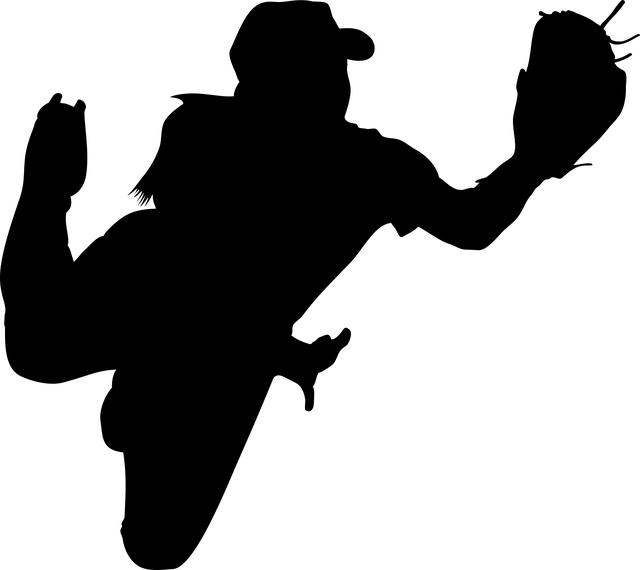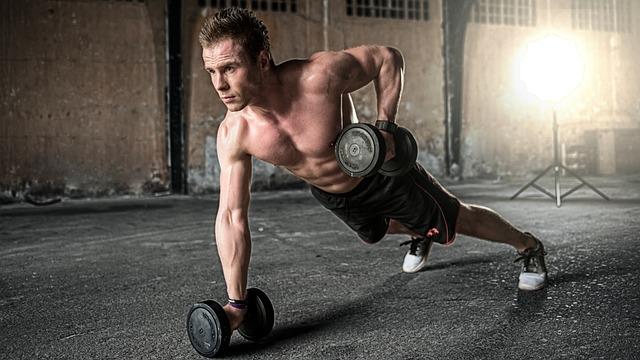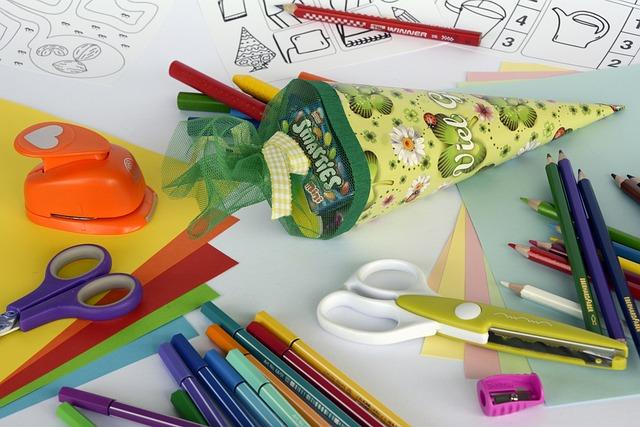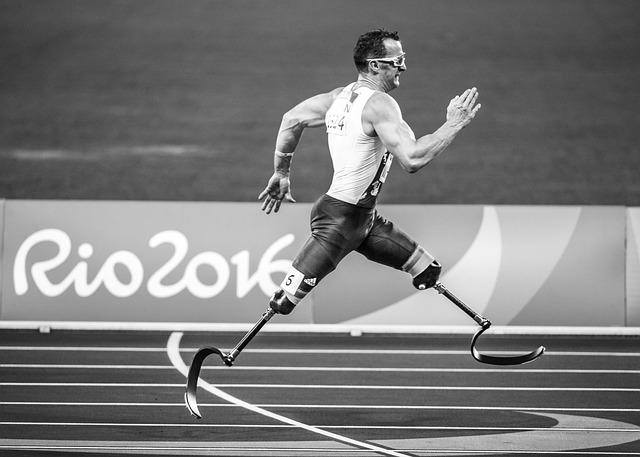Dumbbell Workout for Trapezius: Sculpt Your Trapezius Muscles!
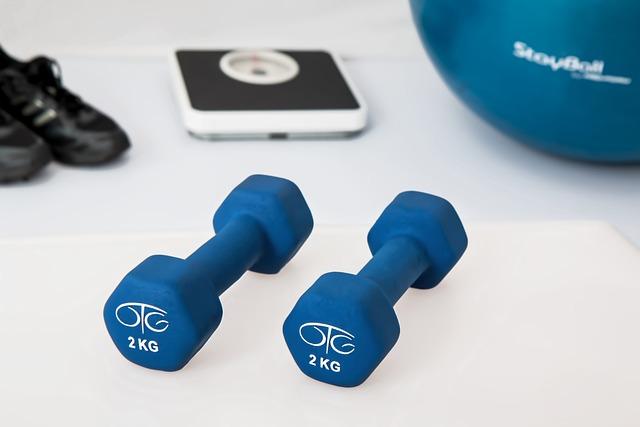
Are you ready to sculpt your trapezius muscles and take your workouts to the next level? Look no further! In this article, we will delve into the world of dumbbell exercises specifically designed to target and strengthen your trapezius muscles. Whether you’re a fitness enthusiast or a newbie to the world of weightlifting, we’ve got you covered with an informative and comprehensive guide. Get ready to elevate your workout routine and achieve that strong, chiseled trapezius you’ve always desired. So grab your dumbbells and let’s get started on this transformative fitness journey!
Contents
- 1. Understanding the Trapezius Muscles: Anatomy and Function
- 2. Benefits of Dumbbell Exercises for Trapezius Development
- 3. Key Dumbbell Movements for Targeting the Trapezius Muscles
- 4. Proper Form and Technique: Mastering Dumbbell Shoulder Shrugs
- 5. Beyond Shrugs: Alternative Dumbbell Exercises for Trapezius Sculpting
- 6. Designing an Effective Dumbbell Workout Routine for Trapezius Growth
- 7. Training Tips and Precautions for Safe and Efficient Trapezius Workouts
- Training Tips for Trapezius Workouts:
- Precautions for Safe Trapezius Workouts:
- 8. Incorporating Progressive Overload: How to Challenge and Hypertrophy Your Trapezius Muscles
- 9. Common Mistakes to Avoid: Troubleshooting Your Trapezius Workout
- 10. Fueling Your Trapezius Workout: Nutrition and Recovery Tips
1. Understanding the Trapezius Muscles: Anatomy and Function
The trapezius muscles are a set of large muscles located on the upper back and neck. They play a crucial role in helping to stabilize and move the shoulder blades, allowing for a wide range of upper body movements. Understanding the anatomy and function of the trapezius muscles is essential when it comes to designing an effective workout routine.
The trapezius muscles are divided into three main sections: the upper trapezius, middle trapezius, and lower trapezius. The upper trapezius is responsible for elevating the shoulders, while the middle trapezius helps to retract or squeeze the shoulder blades together. The lower trapezius plays a role in depressing or pulling the shoulder blades downwards.
When it comes to training the trapezius muscles, incorporating dumbbell exercises into your routine can be highly effective. Dumbbell shrugs are a classic exercise that targets the upper trapezius and helps to build strength and definition in this area. Simply stand upright with a dumbbell in each hand, then lift your shoulders towards your ears, hold for a moment, and slowly lower them back down. Aim for 3 sets of 12-15 repetitions.
To target the middle trapezius, try bent-over lateral raises with dumbbells. Start by standing with your feet shoulder-width apart, then hinge forward at the hips while maintaining a slight bend in your knees. Hold a dumbbell in each hand and lift your arms out to the sides, squeezing your shoulder blades together as you do so. Lower the dumbbells back down with control and repeat for 3 sets of 12-15 reps.
Lastly, to engage the lower trapezius muscles, incorporate dumbbell rows into your routine. Holding a dumbbell in one hand, position yourself with one knee and the same-side hand on a bench, while the other leg is extended behind you. Keeping your back straight, row the dumbbell up towards your waist, squeezing your shoulder blade towards your spine. Lower the dumbbell back down and perform 3 sets of 12-15 reps on each side.
Remember, proper form and technique are essential when performing any exercise. Start with lighter weights and gradually increase the load as you become more comfortable and confident. Don’t forget to warm up and stretch your trapezius muscles before each workout to prevent injury and optimize performance.
2. Benefits of Dumbbell Exercises for Trapezius Development
The trapezius muscle is a key component of a strong and sculpted upper body. Not only does a well-developed trapezius enhance your overall physique, but it also plays a vital role in maintaining good posture and preventing shoulder and neck pain. Dumbbell exercises are a fantastic way to target and shape your trapezius muscles effectively.
-
Increased muscle activation: Dumbbell exercises engage multiple muscle fibers within the trapezius, resulting in increased muscle activation and growth. Unlike machines, dumbbells allow for a greater range of motion, activating more muscle fibers throughout each exercise.
-
Functional strength: Dumbbell exercises for trapezius development promote functional strength, meaning they simulate real-life movements and improve your ability to perform daily activities involving your shoulder and neck muscles. By incorporating dumbbell exercises into your workout routine, you’ll not only look strong but also be functionally strong.
- Versatile exercises: Dumbbells offer a wide range of exercises that target different areas of the trapezius muscle. From shoulder shrugs and upright rows to lateral raises and bent-over rows, there are plenty of variations to choose from based on your fitness level and personal preferences. This versatility ensures you can continually challenge and stimulate your trapezius muscles for maximum growth.
Incorporating dumbbell exercises for trapezius development into your workout routine can lead to well-rounded upper-body strength, improved posture, and a sculpted physique. Remember to start with lighter weights and gradually increase the resistance as your strength improves. Don’t forget to prioritize proper form and technique to minimize the risk of injury and maximize your results. So grab a pair of dumbbells, and let’s sculpt those trapezius muscles!
3. Key Dumbbell Movements for Targeting the Trapezius Muscles
Dumbbell Workout for Trapezius: Sculpt Your Trapezius Muscles!
Are you looking to build a strong and defined trapezius muscle? Look no further! In this post, we will discuss the key dumbbell movements that will target and sculpt your trapezius muscles effectively. By incorporating these exercises into your workout routine, you can achieve a well-rounded and impressive upper body.
-
Dumbbell Shrugs:
- Stand with your feet shoulder-width apart, holding a dumbbell in each hand.
- Relax your shoulders and let them hang down.
- Lift your shoulders towards your ears as high as possible, making sure to keep your arms straight.
- Hold the contraction for a second, then slowly lower your shoulders back down.
- Repeat for 3 sets of 12-15 reps.
-
Dumbbell Upright Rows:
- Stand with your feet shoulder-width apart, holding a dumbbell in each hand with an overhand grip.
- Start with your arms extended in front of you, palms facing your body.
- Pull the dumbbells up towards your chin, leading with your elbows.
- Keep your elbows out to the sides and squeeze your shoulder blades together at the top of the movement.
- Slowly lower the dumbbells back to the starting position.
- Repeat for 3 sets of 10-12 reps.
- Dumbbell Reverse Flyes:
- Stand with your feet hip-width apart, holding a dumbbell in each hand.
- Bend your knees slightly and hinge forward at the hips, maintaining a neutral spine.
- Extend your arms out to the sides, with a slight bend in your elbows.
- Squeeze your shoulder blades together as you lift the dumbbells up to shoulder height.
- Slowly lower the dumbbells back down to the starting position.
- Repeat for 3 sets of 12-15 reps.
By incorporating these key dumbbell movements into your workout routine, you can effectively target and sculpt your trapezius muscles. Remember to start with lighter weights and gradually increase the load as your strength improves. Don’t forget to maintain proper form throughout each exercise for optimal results. Happy sculpting!
4. Proper Form and Technique: Mastering Dumbbell Shoulder Shrugs
Dumbbell shoulder shrugs are an excellent exercise to target and sculpt your trapezius muscles. Proper form and technique are crucial to maximizing the effectiveness of this exercise and avoiding injury. Here are some key tips to master the dumbbell shoulder shrugs:
- Start by standing upright with your feet shoulder-width apart and a dumbbell in each hand, palms facing your body.
- Keep your spine straight and engage your core muscles throughout the exercise.
- Slowly raise your shoulders as high as possible, while keeping your arms straight and relaxed. Imagine you are trying to touch your ears with your shoulders.
- Hold the contraction at the top for a second, then slowly lower your shoulders back down to the starting position.
- Repeat for the desired number of repetitions.
To enhance your dumbbell shoulder shrugs, consider incorporating the following variations:
- Single-arm dumbbell shrugs: Perform the exercise with one arm at a time, focusing on maintaining balance and stability.
- Paused dumbbell shrugs: Hold the top position of the shrug for 3-5 seconds before lowering your shoulders. This will increase the time under tension for your trapezius muscles.
- Superset with other exercises: Pair your dumbbell shrugs with exercises that target the trapezius muscles from different angles, such as upright rows or bent-over lateral raises.
Remember, it’s important to start with lighter weights and gradually increase the load as your strength improves. Additionally, always listen to your body and modify the exercise if you experience any discomfort or pain. Mastering the proper form and technique will help you sculpt and strengthen your trapezius muscles effectively.
5. Beyond Shrugs: Alternative Dumbbell Exercises for Trapezius Sculpting
The trapezius muscles, located in the upper back and neck, play a crucial role in maintaining good posture and stability. While shrugs are a popular exercise for targeting the trapezius, there are several alternative dumbbell exercises that can help you sculpt and strengthen these muscles further.
-
Farmer’s Walk: Hold a dumbbell in each hand and walk for a designated distance or time. This exercise not only works your trapezius muscles but also engages your core and grip strength. Focus on keeping your shoulders down and back as you walk.
-
Bent Over Rows: Stand with your feet shoulder-width apart, knees slightly bent, and a dumbbell in each hand. Hinge at the hips, keeping your back straight and parallel to the floor. With your palms facing each other, row the dumbbells up towards your chest, squeezing your shoulder blades together.
- Upright Rows: Stand with your feet shoulder-width apart, knees slightly bent, and hold a dumbbell in each hand. Relax your arms in front of your thighs with your palms facing your body. Lift the dumbbells towards your chin, leading with your elbows, while keeping them close to your body. As you lift, squeeze your trapezius muscles and hold for a second before lowering the weights back down.
Remember to start with a weight that challenges you but allows you to maintain proper form. Gradually increase the weight as you get stronger. Incorporating these alternative dumbbell exercises into your routine will help you achieve well-rounded trapezius muscle development and improve your overall upper body strength.
6. Designing an Effective Dumbbell Workout Routine for Trapezius Growth
The trapezius muscles play a crucial role in maintaining good posture and upper body strength. By designing an effective dumbbell workout routine specifically targeting the trapezius, you can sculpt and strengthen these muscles to achieve a well-defined upper back. Here are some key exercises to include in your routine:
-
Dumbbell Shrugs: Stand with your feet shoulder-width apart and hold a dumbbell in each hand, palms facing the thighs. Lift your shoulders as high as possible towards your ears, hold for a second, and then release. Aim for 3 sets of 12-15 reps.
-
Dumbbell Upright Rows: Begin by standing with your feet hip-width apart and the dumbbells resting against the front of your thighs. Keeping your arms close to your body, draw the dumbbells up towards your chin, leading with your elbows. Lower the weights back down slowly and repeat for 3 sets of 10-12 reps.
- Dumbbell Row: Place your left knee and hand on a bench, with the right foot planted on the ground. Hold a dumbbell in your right hand, letting it hang down towards the floor. Engaging your back muscles, pull the dumbbell up towards your ribs while keeping your elbow close to your side. Repeat on the other side for a total of 3 sets of 10-12 reps per arm.
To ensure you are getting the most out of your dumbbell workout routine for trapezius growth, it is important to maintain proper form throughout each exercise. Focus on engaging the targeted muscles and avoid using momentum to lift the weights. Remember to start with lighter weights and gradually increase the load as your strength improves. Happy sculpting!
7. Training Tips and Precautions for Safe and Efficient Trapezius Workouts
When it comes to sculpting your trapezius muscles, dumbbell workouts can be highly effective. Not only do they target and strengthen your trapezius muscles, but they also improve your overall posture and help prevent common shoulder and neck injuries. To ensure safe and efficient trapezius workouts, here are some important training tips and precautions you should keep in mind.
Training Tips for Trapezius Workouts:
- Start with a warm-up: Before jumping into your trapezius workout routine, it’s crucial to warm up your muscles. Perform dynamic stretches and light cardio exercises to increase blood flow and prepare your body for the workout.
- Choose the right dumbbell weight: Selecting the appropriate dumbbell weight is essential to avoid strain or injuries. Start with a weight that challenges you but allows you to maintain proper form throughout the exercises.
- Focus on proper form: Proper form is key to target the trapezius muscles effectively and prevent unnecessary strain. Keep your spine aligned, shoulders relaxed, and engage your core during each movement.
- Vary your exercises: To achieve well-rounded development of your trapezius muscles, incorporate a variety of exercises that target the different regions within the muscle group. This can include dumbbell shrugs, upright rows, and bent-over lateral raises, just to name a few.
Precautions for Safe Trapezius Workouts:
- Avoid overtraining: While it’s important to challenge yourself, overtraining can lead to fatigue and injuries. Give your muscles time to recover between workouts and listen to your body’s limits.
- Start slow and progress gradually: If you’re a beginner, it’s crucial to start with lighter weights and gradually increase the intensity and duration of your workouts. This allows your muscles to adapt and reduces the risk of strains or sprains.
- Never sacrifice form for weight: Concentrate on maintaining proper form throughout the workout, even if it means using lighter weights. Sacrificing form can lead to poor muscle activation and potential injuries.
- Consult a professional trainer: If you’re unsure about your technique or how to structure your trapezius workouts, consider consulting a certified fitness trainer. They can offer guidance tailored to your specific needs and goals.
| Exercise | Repetitions | Sets |
|---|---|---|
| Dumbbell Shrugs | 12-15 | 3 |
| Upright Rows | 10-12 | 3 |
| Bent-Over Lateral Raises | 10-12 | 3 |
| Dumbbell High Pulls | 8-10 | 3 |
Remember, consistency is key when it comes to achieving your desired trapezius muscle definition. By following these training tips and precautions, you can ensure safe and efficient trapezius workouts that will help you sculpt strong and impressive trapezius muscles. Get ready to unleash your full trapezius potential and elevate your overall physique!
8. Incorporating Progressive Overload: How to Challenge and Hypertrophy Your Trapezius Muscles
To effectively challenge and hypertrophy your trapezius muscles, incorporating progressive overload into your dumbbell workouts is crucial. Progressive overload refers to gradually increasing the demands placed on your muscles over time, forcing them to adapt and grow stronger. By implementing the following strategies, you can sculpt your trapezius muscles and achieve a more defined and aesthetic physique.
-
Increase weight gradually: Begin with a weight that allows you to perform the exercises with proper form and technique. As your strength improves, gradually increase the weight to continue challenging your trapezius muscles. This progression will stimulate muscle growth and hypertrophy.
-
Vary your exercises: The trapezius muscles are complex and can be targeted from different angles. Incorporate a variety of dumbbell exercises such as dumbbell shrugs, upright rows and dumbbell rows to engage different portions of the trapezius muscles. This variation will help ensure balanced development and prevent plateauing.
- Adjust rep ranges: To elicit muscle growth, incorporate a mix of higher and lower rep ranges into your dumbbell workouts. Higher reps (10-15) with lighter weights can help improve muscular endurance, while lower reps (6-8) with heavier weights promote muscle hypertrophy. Aim to perform 3-4 sets of each exercise, focusing on maintaining proper form throughout.
By consistently incorporating progressive overload and implementing a well-rounded dumbbell workout routine, you can effectively challenge and hypertrophy your trapezius muscles. Remember to listen to your body, prioritize proper form, and gradually increase the demands placed on your muscles to achieve optimal results.
9. Common Mistakes to Avoid: Troubleshooting Your Trapezius Workout
When it comes to sculpting your trapezius muscles, a dumbbell workout can be highly effective. However, it’s important to be aware of some common mistakes that people make when performing this workout. By avoiding these mistakes, you can ensure that you are getting the most out of your trapezius workout and avoiding any potential injuries.
1. Poor form:
One of the biggest mistakes people make is using poor form during their dumbbell exercises. It’s important to maintain proper posture and alignment throughout each movement. This means keeping your shoulders back and down, engaging your core, and avoiding any excessive swinging or jerking motions. By focusing on your form, you can target your trapezius muscles more effectively and reduce the risk of strain or injury.
2. Overtraining:
Another common mistake is overtraining. While it’s important to challenge your muscles, it’s also crucial to give them time to rest and recover. Overtraining can lead to muscle fatigue, decreased performance, and an increased risk of injury. Make sure to incorporate rest days into your routine and listen to your body. If you’re experiencing excessive muscle soreness or fatigue, it may be a sign that you need to scale back on your workouts.
3. Neglecting other muscle groups:
While focusing on your trapezius muscles is important, it’s equally important to work on other muscle groups as well. Neglecting other areas can lead to muscle imbalances and potential injuries. Incorporate exercises that target your shoulders, back, and core to ensure overall strength and balance. A well-rounded workout routine will not only help you sculpt your trapezius muscles, but also promote better posture and stability.
Troubleshooting your trapezius workout:
- Check your form and make sure you are using proper technique.
- Don’t overdo it – give your muscles time to rest and recover.
- Diversify your exercises to target different muscle groups and promote balance.
10. Fueling Your Trapezius Workout: Nutrition and Recovery Tips
When it comes to sculpting your trapezius muscles, a well-rounded workout routine is only part of the equation. Proper nutrition and effective recovery strategies are equally important in maximizing your results. Here are some valuable tips to fuel your trapezius workout:
1. Protein is your best friend:
- Include lean protein sources such as chicken, turkey, fish, beans, and tofu in your meals. Protein helps repair and rebuild muscles after an intense trapezius workout.
- Aim for approximately 0.8-1 gram of protein per pound of body weight daily.
2. Hydrate, hydrate, hydrate:
- Proper hydration is essential for optimal muscle function and recovery.
- Drink plenty of water throughout the day, especially before, during, and after your trapezius workout.
3. Don’t skimp on carbohydrates:
- Carbohydrates provide the energy needed for intense trapezius workouts.
- Opt for whole grains, fruits, and vegetables as your primary sources of carbohydrates.
Recovery Tips for Maximum Results
Allowing your trapezius muscles to properly recover is crucial for muscle growth and avoiding injury. Here are some recovery tips to incorporate into your routine:
- 1. Get enough sleep: Aim for 7-9 hours of quality sleep each night to facilitate muscle repair and growth.
- 2. Foam rolling and stretching: Spend time foam rolling your trapezius muscles and incorporating stretching exercises to improve flexibility and reduce muscle tension.
- 3. Active rest days: Give your trapezius muscles a break by engaging in low-impact activities such as yoga or swimming on rest days.
Remember, while a dumbbell workout will certainly help sculpt your trapezius muscles, ensuring proper nutrition and recovery strategies are in place will take your results to the next level. Stay consistent, fuel your body right, and watch your trapezius muscles transform!
Incorporating a dumbbell workout for your trapezius muscles can truly take your fitness game to the next level! By focusing on the specific exercises that target this often-neglected area, you’ll be able to sculpt and strengthen your trapezius like never before. From powerful shrugs to smart row variations, we’ve covered all the essential moves to help you achieve that well-defined, chiseled look you’ve always desired. So, why wait? Grab those dumbbells and get ready to amp up your trapezius muscles in no time. It’s time to unleash your full potential and take pride in your well-rounded, strong physique!



